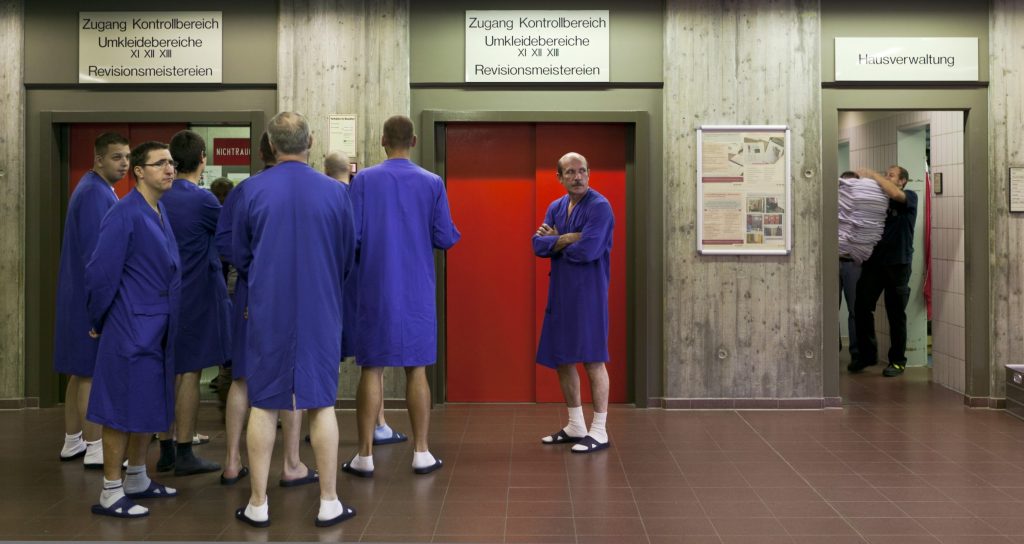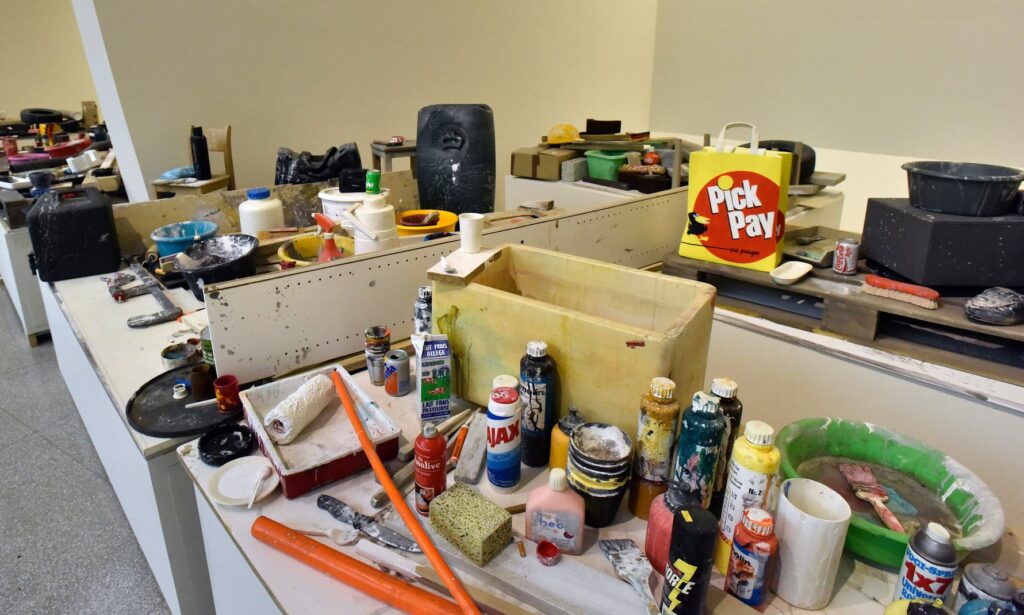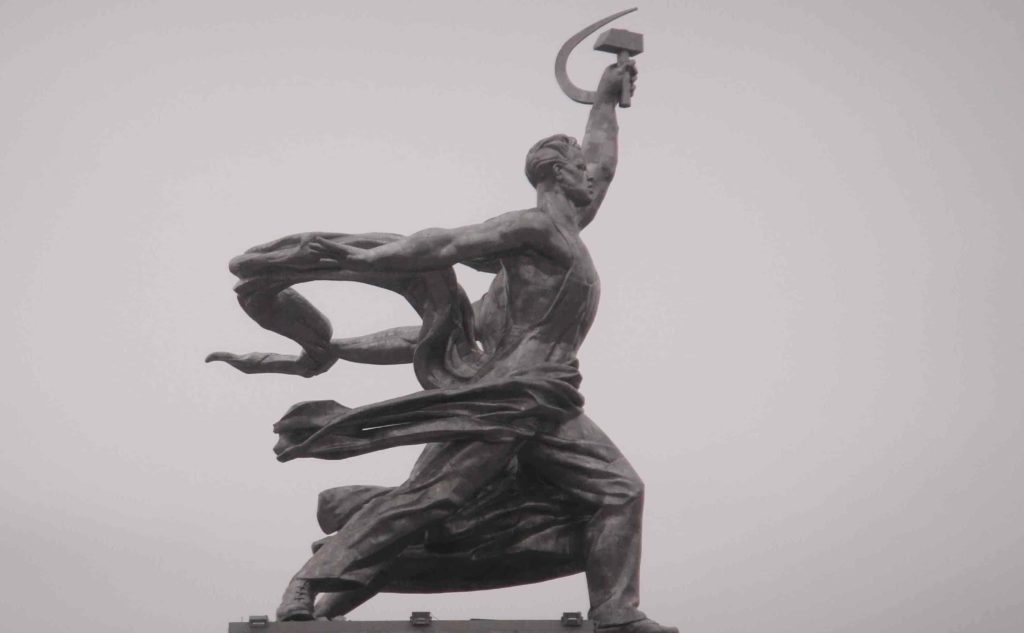THE WALKING MAN
For half his life James Robertson has been standing at an injection moulding machine in the production hall of Schain Mold & Engineering in a suburb of Detroit. At some point he can no longer afford to repair his car, so from then on he started walking to work — 34 miles, 5 days a week, for 10 years. Some of the distance can be covered by public bus, but the commute itself still takes him 9 hours a day.
When he gets home at 4am, he lies down for 2 hours, then he has to start again. To keep going, Robertson runs on Mountain Dew and Coca-Cola. And on weekends he takes care of his sleep deficit. When a banker and a student took notice of this man struggling against the elements along the streets on foot, they helped him get a new car with the aid of a crowdfunding campaign. James Robertson is thrust into the spotlight, albeit briefly.
The Detroit Free Press reported on James Robertson for the first time in February 2015.
Robertson’s story quickly goes viral, with television stations nationwide reporting it. James Robertson had become the “The Walking Man.” During the course of an interview, the Fox News anchor celebrates Robertson; “I’m also proud of you. Because so many people make excuses to why they don’t go to work. You say, there were no excuses. You are the man that America is looking up to today. And we all want to be like you.”
Elias Canetti writes in “Crowds and Power”: “On both sides of the ideological conflict (note: capitalism and communism) production is encouraged and fomented in every way. Whether one produces to sell or produces to distribute, the process of this production itself is not only not touched by either side, it is revered, and it is not too much to say that it has something sacred in the eyes of most today.”
Thus James Robertson gives away his lifetime and health to a God who devours his own children. Not done with that, the US media proclaim his tale of woe as the ideal and guiding principle that supports the dogma of a religion of work, which James Roberston also believes in when he says: “I can’t imagine not working”.
See also Adolf Hennecke — Hero of the Battle of Production.
Detroit Man Walks 21 Miles Round Trip To Work Daily | NBC News
James Robertson Walks 21 Miles Each Way to His Job in Detroit / ABC News
James Robertson, Detroit man with 21-mile walk to work gets car / WXYZ-TV Detroit | Channel 7WXYZ-TV Detroit | Channel 7

© DW Deutsche Welle
THE WALKING MAN
For half his life James Robertson has been standing at an injection moulding machine in the production hall of Schain Mold & Engineering in a suburb of Detroit. At some point he can no longer afford to repair his car, so from then on he started walking to work — 34 miles, 5 days a week, for 10 years. Some of the distance can be covered by public bus, but the commute itself still takes him 9 hours a day.
When he gets home at 4am, he lies down for 2 hours, then he has to start again. To keep going, Robertson runs on Mountain Dew and Coca-Cola. And on weekends he takes care of his sleep deficit. When a banker and a student took notice of this man struggling against the elements along the streets on foot, they helped him get a new car with the aid of a crowdfunding campaign. James Robertson is thrust into the spotlight, albeit briefly.
The Detroit Free Press reported on James Robertson for the first time in February 2015.
Robertson’s story quickly goes viral, with television stations nationwide reporting it. James Robertson had become the “The Walking Man.” During the course of an interview, the Fox News anchor celebrates Robertson; “I’m also proud of you. Because so many people make excuses to why they don’t go to work. You say, there were no excuses. You are the man that America is looking up to today. And we all want to be like you.”
Elias Canetti writes in “Crowds and Power”: “On both sides of the ideological conflict (note: capitalism and communism) production is encouraged and fomented in every way. Whether one produces to sell or produces to distribute, the process of this production itself is not only not touched by either side, it is revered, and it is not too much to say that it has something sacred in the eyes of most today.”
Thus James Robertson gives away his lifetime and health to a God who devours his own children. Not done with that, the US media proclaim his tale of woe as the ideal and guiding principle that supports the dogma of a religion of work, which James Roberston also believes in when he says: “I can’t imagine not working”.
See also Adolf Hennecke — Hero of the Battle of Production.
Detroit Man Walks 21 Miles Round Trip To Work Daily | NBC News
James Robertson Walks 21 Miles Each Way to His Job in Detroit / ABC News
James Robertson, Detroit man with 21-mile walk to work gets car / WXYZ-TV Detroit | Channel 7WXYZ-TV Detroit | Channel 7

© DW Deutsche Welle

Power Plant Employment
Movies and documentaries on reactor disasters were trending last year. 10 years since Fukushima and 35 years since Chernobyl rolled the carpet out. For a true insight into the working world of nuclear power plants, however, I do recommend going further back, to Volker Sattel's "Unter Kontrolle" (2011).
Japan’s sea lions
Anti-stereotypical professions: Ama-San and Haenyo ─ apnoea divers in Japan and Korea
Fischli and Weiss as DIY
A young Youtuber has presumably unwittingly made a remake of Fischli and Weiss' famous art video "The Way Things Go" (1987), raising interesting questions about the relationship between art, professional craft and DIY.
Fitness to work?
Under the topos ‘health’, a comprehensive optimization and enhancement logic is implanted into people. Fitness is one of several influencing factors in establishing innovative, exceptional and performative entrepreneur of oneself.
Erwin and Elvira, the butcher
Fassbinder's outstanding melodrama "In a Year of 13 Moons" (1978) is a consistently topical contribution to today's identity politics debate and a forceful exclamation mark for anti-stereotypical professions.
The old fear of the end of new work itself
We all look forward to the end of the working day, but not the end of work itself. The fear of automation and the end of work is an old topos, as evidenced by industrial films from the 1950s.

About this blog
By selecting a film or an image, this blog literally illustrates the vast sphere of work, employment & education in an open collection of academic, artistic and also anecdotal findings.
About us
Konrad Wakolbinger makes documentary films about work and life. Jörg Markowitsch does research on education and work. They are both based in Vienna. Information on guest authors can be found in their corresponding articles.
More about
Interested in more? Find recommendations on relevant festivals, film collections and literature here.
About this blog
With picking a film or an image, this blog literally illustrates the vast sphere of work, employment & education in an open collection of academic, artistic and also anecdotal findings.
About us
Konrad Wakolbinger makes documentary films about work and life. Jörg Markowitsch does research on education and work. We both work in Vienna. Information on guest authors can be found in their respective articles.
More about
Interested in more? Find recommendations on relevant festivals, film collections and literature here.







